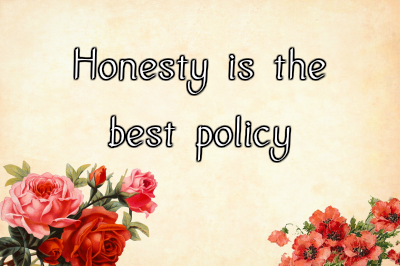Most PR agencies perform the same daily tasks – targeted media outreach, meticulous coverage tracking, and competitive monitoring, among others. Yet the PR tools that teams use can make the difference between a project and an ongoing retainer relationship. Below are ten tracking tools PR professionals can use to impress their peers or clients and maximize efficiency.
While Google is a default monitoring tool for many agencies, it can be time-consuming, and it often misses coverage. Meltwater tracks from 275,000 online news sources and has partnerships for print and broadcast monitoring. It can track social media coverage as well, including Twitter, Facebook, Instagram, YouTube and over 300 million blogs. But the real advantage of Meltwater may be its ability to showcase this data in the format agency and internal PR teams prefer, from excel grids to pie and bar charts. Mastering it can not only help PR tracking coverage but offer feedback on steps to increase visibility.
Sometimes it can be difficult to land pitches, but with ProfNet, the media opportunities present themselves. ProfNet provides direct emails with queries from journalists and others looking for commentary, as well as requests for speakers for conferences and trade shows. It also offers the opportunity to showcase the expertise of a company or client prior to a timely newsworthy hook, making it useful during a slow period of news coverage with few announcements.
Upwave helps PR professionals create proactive data and trends using its Instant Insights feature. This tool helps survey and garner insights from more respondents than any other insights platform, meaning more data. In addition, Upwave ensures that the data collection is coming from regular people and not survey addicts, leading to high-quality results. This data is often wide-ranging and offers insights that can be newsworthy to a host of different reporters and outlets.
With reporters switching outlets and topics, especially in these uncertain times, it’s more important than ever to have an up-to-date database showcasing where reporters are and what topics they cover. Along with helping monitor coverage, news and social media, Muck Rack helps provide and share media lists that are always contemporary resulting in stronger pitching success and more media opportunities.
Google Trends is underutilized in our view. As a free tool that offers data and graphs on the popularity of specific search terms, it can be useful for research and brainstorming as well as monitoring. PR professionals can not only capitalize on newsworthy angles based on popular trends, but target specific locations using the geographic search trends features. That results in personalized and significant media opportunities affecting a specific community. In addition, the keyword function helps monitor popular topics throughout an extended period, providing an opportunity to analyze and launch specific campaigns precisely when people are searching for a specific topic.
Anewstip is a search engine used to find journalists and media outlets who have posted about a topic on Twitter. The software gives users the ability to sort by influence, number of tweets, or how many times the person has mentioned a specific keyword. This provides an opening to construct a media list that targets individuals who are, at a minimum, interested in the topic. This PR tracking tool also offers the option to monitor tweets and articles about a keyword in real time, enabling PR professionals to contact the journalist at the right moment.
GetNotify is a free tool that helps monitor the success of a campaign by notifying the sender if the email has been read by the recipient. The recipient will not know that the tool is being used, so it should be used with caution. But it can offer feedback about the success of the pitch, such as whether the subject line was catchy, in addition to the longer-term benefit of understanding which reporters view pitches regularly and which do not.
Building radio and podcasts lists can be grueling, in part because of the difficulty of finding both the opportunities and the relevant contact information. With Radio Guest List, PR professionals can sign up for email notifications from producers, journalists, and podcast hosts who are looking for experts on specific topics, providing opportunities to showcase clients and their leadership teams. The email notifications occur daily ensuring recent and relevant talk show, podcast and radio opportunities.
Hunter.io is a sophisticated website that uses company websites to track down email addresses. In addition to its paid service, users get 150 free searches a month. Hunter also allows users to undergo a domain search for all publicly available email addresses associated with a company’s domain name. Lastly, it can verify the addresses, ensuring updated emails and media lists.
BuzzSumo provides the latest trends in a given industry. Simply by entering a specific topic into the search bar, BuzzSumo will deliver all the most popular, relevant and recent content on that subject. It can search Q&A sites and forums to help users keep track of what a given community is asking about. This PR tracking tool also helps track competitors, including what they publish and their engagement.
What are some of your must have PR tools for coverage? Let us know on Twitter @crenshawcomm!








 “Play well together and share.” Kids usually need to be taught that chores are easier when shared, and some never learn to share their toys with good grace. But life is a collaboration, and that includes working in public relations. A lot of PR fingerprints can be found on a single piece of client work. When we get a client win, no one player deserves to stand on the podium. It’s a team sport, and teammates should share the toil, the glory, and, when things go awry, the blame. Mom knew that sharing wasn’t just about generosity for its own sake; it’s a work and life skill, as in this post about
“Play well together and share.” Kids usually need to be taught that chores are easier when shared, and some never learn to share their toys with good grace. But life is a collaboration, and that includes working in public relations. A lot of PR fingerprints can be found on a single piece of client work. When we get a client win, no one player deserves to stand on the podium. It’s a team sport, and teammates should share the toil, the glory, and, when things go awry, the blame. Mom knew that sharing wasn’t just about generosity for its own sake; it’s a work and life skill, as in this post about 

